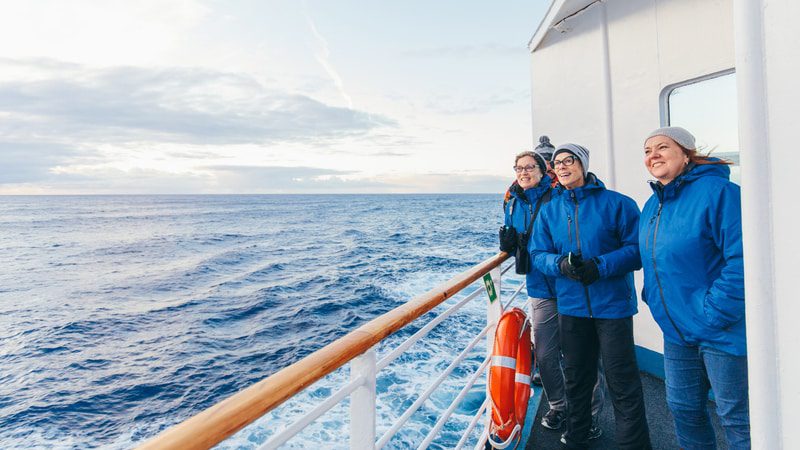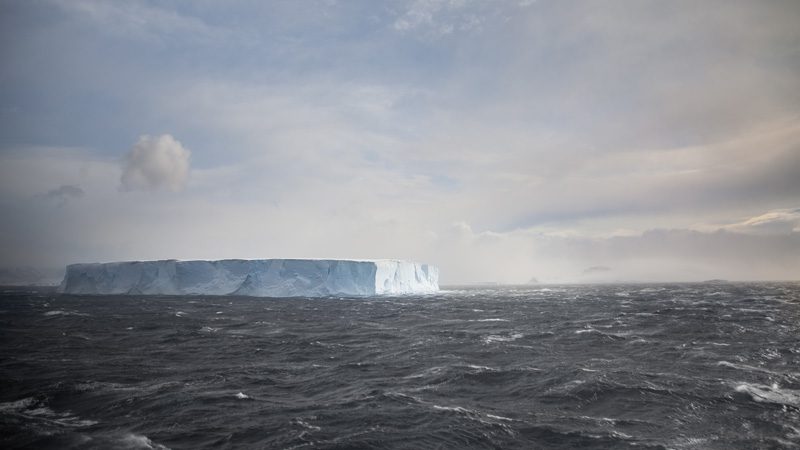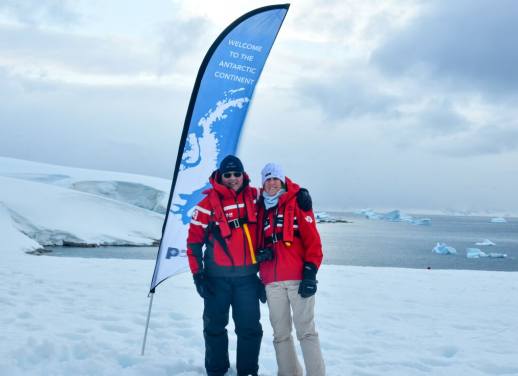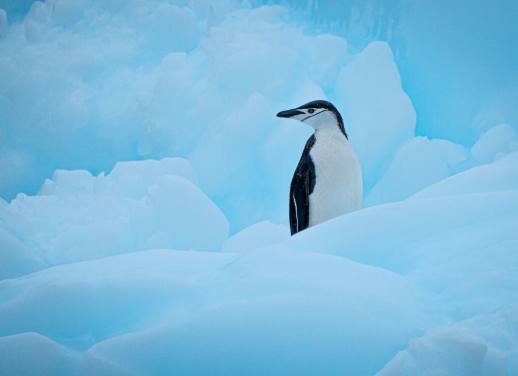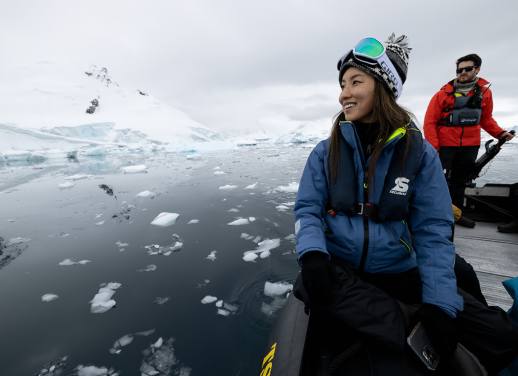They say you have to earn the Antarctic. I don’t know who ‘they’ are, but I’m assuming that what ‘they’ mean is that you need to sail across one mighty body of open sea to reach the Antarctic Peninsula. And not just any open sea – this is the Drake Passage: the only unhindered flow of ocean on earth.
The Circumpolar flow of the Southern Ocean travels in a clockwise direction around the bottom of the planet, picking up momentum, storms and hurricanes along the way. To make it even more exciting, the most southerly tip of South America and the most northerly tip of the Antarctic Peninsular reach towards each other like Michaelangelo’s angels in the Sistine Chapel, creating a landmass funnel through which the wild Circumpolar currents must then squeeze themselves.
Now I’ll be honest with you: I got seasick along the Amalfi Coast in the Mediterranean. I used to get seasick on the ferry from Dover to Calais. I get queasy on the Manly Ferry when it goes past the heads in Sydney Harbour. I’ve even been known to get car-sick in the back of taxis.
So I certainly anticipated some trouble with the Drake Passage. But it’s been my lifelong dream to visit Antarctica, so I decided to put my big girl pants on and deal with whatever the Drake could throw at me. The important thing to remember about the Drake is this: it’s worth it. Because at the end of a challenging voyage, you are rewarded with the last unspoiled wilderness on the planet. Not a bad trade off.
And here are the lessons that I learnt:
Get some seasickness medication from your doctor before you travel
Unless you are some kind of Master and Commander, you probably will feel a bit queasy. Even if it’s not full-blown bed-ridden seasickness, most passengers on a cruise to Antarctica get sick. And no, those little seasickness wristbands will not work out here. The good news is, every Intrepid Antarctic departure has an on-board doctor, and a medical room stocked with seasickness tablets. There will also be a chance to chat to the doctor before the departure, to raise any concerns you might have.
Pack a bag before you set sail
Going below deck every time you need something is the worst. Once your ship leaves the Beagle Channel and you start to enter open water, you will soon start to feel queasy. And by then, moving around won’t be much fun. So pack a mini-survival bag that has everything you might want with you (your camera, wallet, spare layers etc). The less you need to go downstairs, the more you will be winning The War on Seasickness.
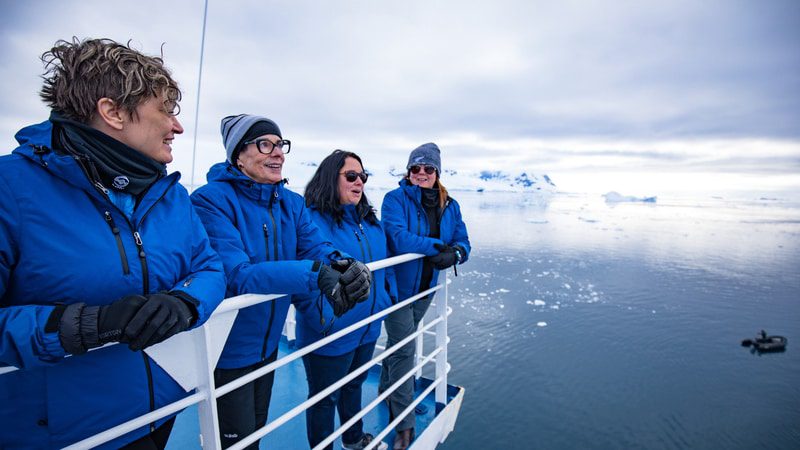
Get some fresh air
The worst thing you can do with seasickness is stay horizontal, in bed, and not leave your room. When you feel nausea begin, try heading to one of the outside decks and getting some fresh air. Wandering albatross tend to follow our boat across the Drake, so you can take your mind off your stomach (and maybe get some good photos at the same time). There are penguins and icebergs to see as we cruise along. Crossing the Drake is all part of the Antarctic experience, so you may as well start experiencing it as soon as possible.
Keep one eye on the horizon and one hand on a steady rail (apparently)
This is designed to trick your senses into thinking that you’re stable. That ‘you got this, right?‘ feeling. Apparently, by staring at the horizon, your eyes and ears recalibrate to make you think you’re on steady ground, and the hand on a sturdy surface is meant to do the same.
Stay off the booze
It’s all too easy to get into the swing of cruise life on your first night; you’re leaving the Beagle Channel, everything’s plain sailing, the atmosphere is buzzing with anticipation – ooh let’s have a cheeky champagne to celebrate! Do not do this unless you would like your drink to revisit you in a few hours. Alcohol is the worst enemy of The War on Seasickness.
The good news
The good news is, the Drake Passage is finite, and for every moment of sickness you experience, just remember that you’re getting closer to the frozen continent at the end of the world. The Drake is a real rite of passage, and by the time you’ve reached Antarctica, you’ll know you’ve earned it. In our experience, most travellers get nauseas on the way towards Antarctica, but very few get similar symptoms on the return journey (your body has had time to adjust to the boat by then).
Our ship, the Ocean Endeavour, is also has an ice class of 1B. That means it’s a dedicated polar vessel, with hydraulic stabilisers to keep the ship level (ish) in choppy water. It’s not like the ferries and cruise ships you’ve used in the past. Try and relax on-board – you’re in very good hands.
As soon as you reach the sub-Antarctic islands and the Antarctic Peninsular, the water becomes calm, and you will start to feel like a billion dollars – there is no happier person that one who has seen the inside of seasickness hell and come back from the brink.
Ready for a real adventure? Check out our Antarctic tours over here.

